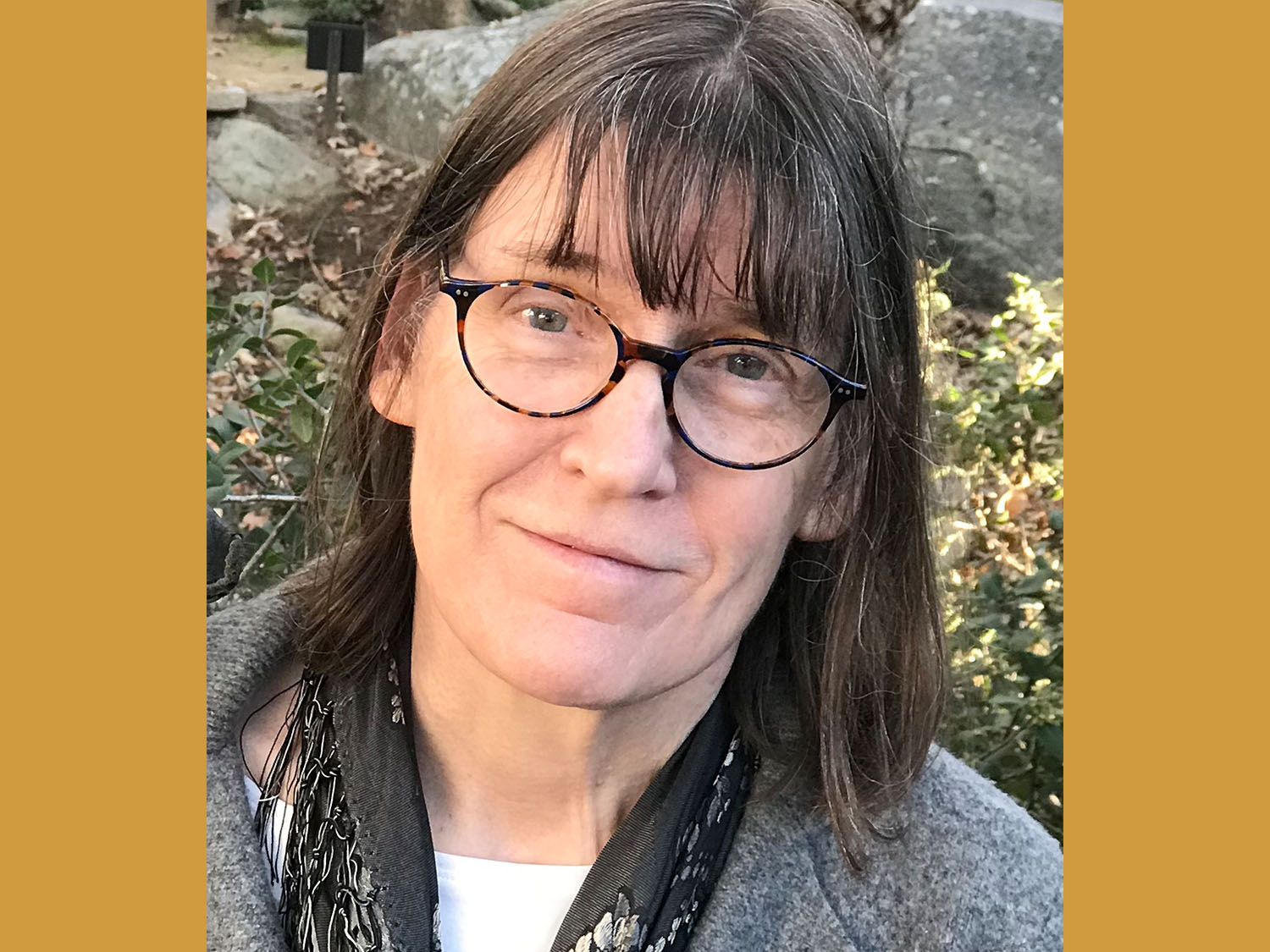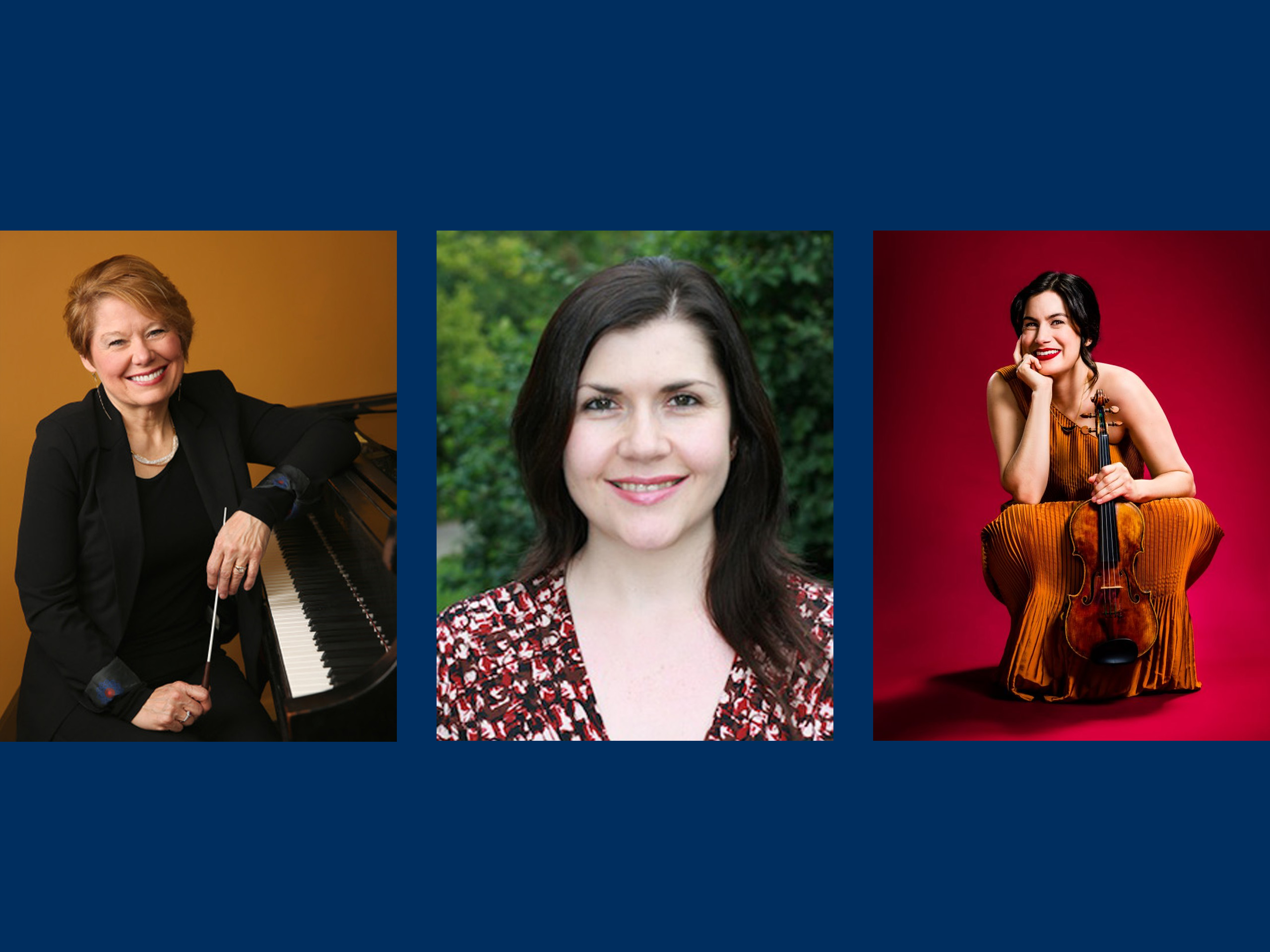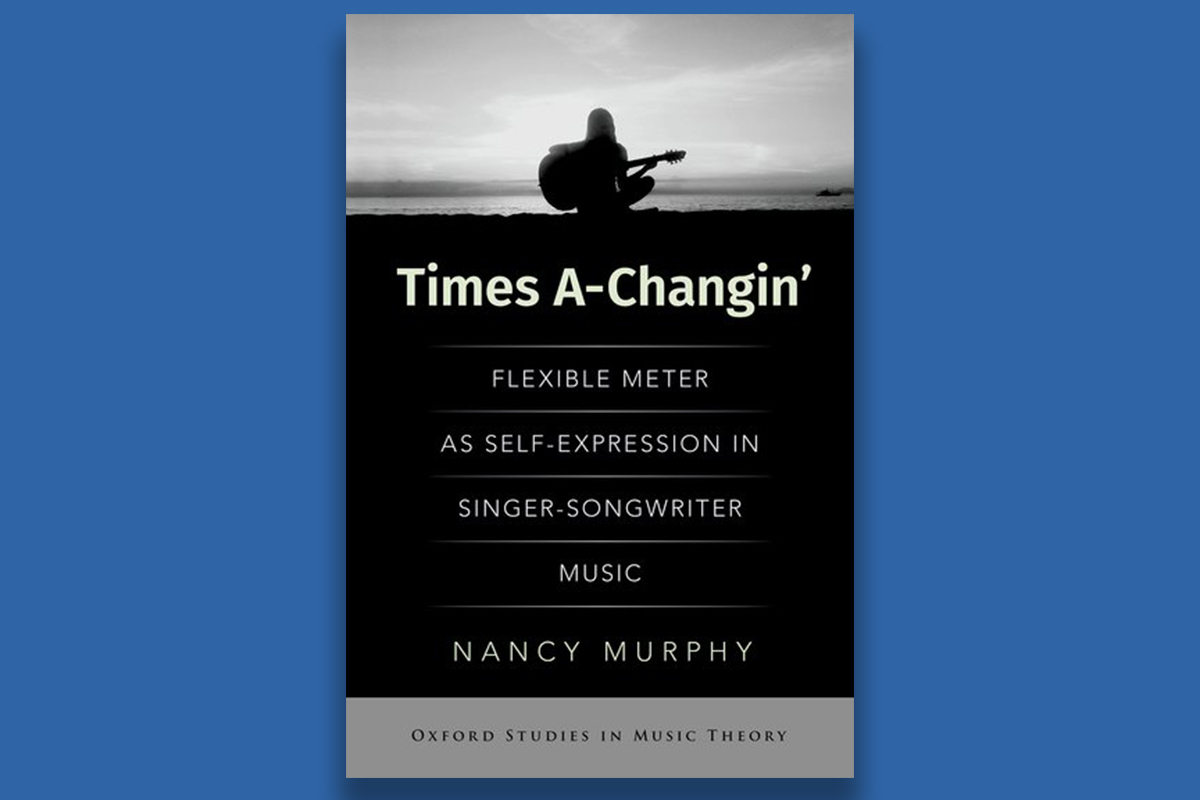Department of Music Theory

The University of Michigan welcomes participants of the Sixth International Schenker Symposium, March 6–8, 2025!
Scholars from several countries will gather for a three-day symposium on the legacy of music theorist Heinrich Schenker, with papers on Schenkerian theory and analysis, history and reception, and new developments in linear and prolongational approaches to music.
The Department of Music Theory is distinguished by the range of achievement in scholarship of both the faculty and students, and by the broad diversity of approaches we foster in research and in teaching. One of the guiding principles of the department is that music theory does not stand alone as a specialty, but is integrated with both other musical and extra-musical disciplines. Faculty expertise ranges from traditional specializations to the forefront of theory and practice, and all are internationally distinguished members of the theory community with highly respected publishing records. Students at all levels are encouraged to advance scholarship in the field of music theory through exploration of the latest research in a wide range of cognate fields such as art history, literature, mathematics, philosophy, linguistics, and psychology. Musical performance experience provides a foundation for the development, investigation, and critique of ideas about music. Furthermore, small classes make possible lively discussion of music exploring analytical and theoretical questions.
Faculty
Active as composers and performers as well as scholars, the music theory faculty contribute field-leading research in counterpoint, Schenkerian analysis, analysis for performers, chromaticism, text-music relations, tonal and post-tonal forms, pedagogy, history of theory, sketch and source study, Ars subtilior and neo-medievalism, music of the Second Viennese School, 20th-century rhythm, the analysis of jazz, rock and pop music, film music, electronic music, cognitive theory, metatheory, music and mathematics, music-language connections, critical theory, philosophy of music, the sociology of knowledge, music and politics, literary theory, theories of gender, feminism and sexuality, and the musics of many particular composers, genres and worldwide styles. This range enables highly diverse seminars and independent studies at both undergraduate and graduate levels, as well as dissertation support that is broad and deep.

Karen Fournier

Marc Hannaford

Patrick Harlin
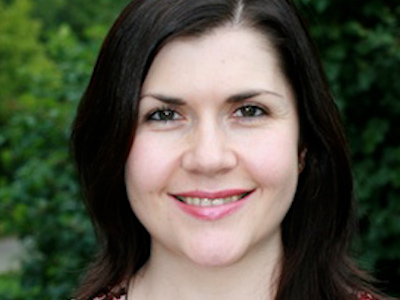
Áine Heneghan

John Knoedler
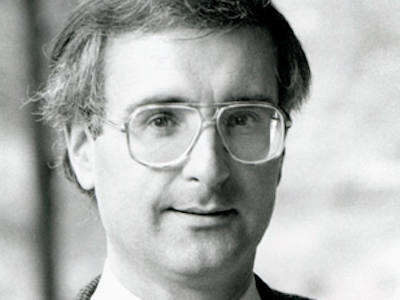
Kevin E. Korsyn

Nathan Martin

Somangshu Mukherji
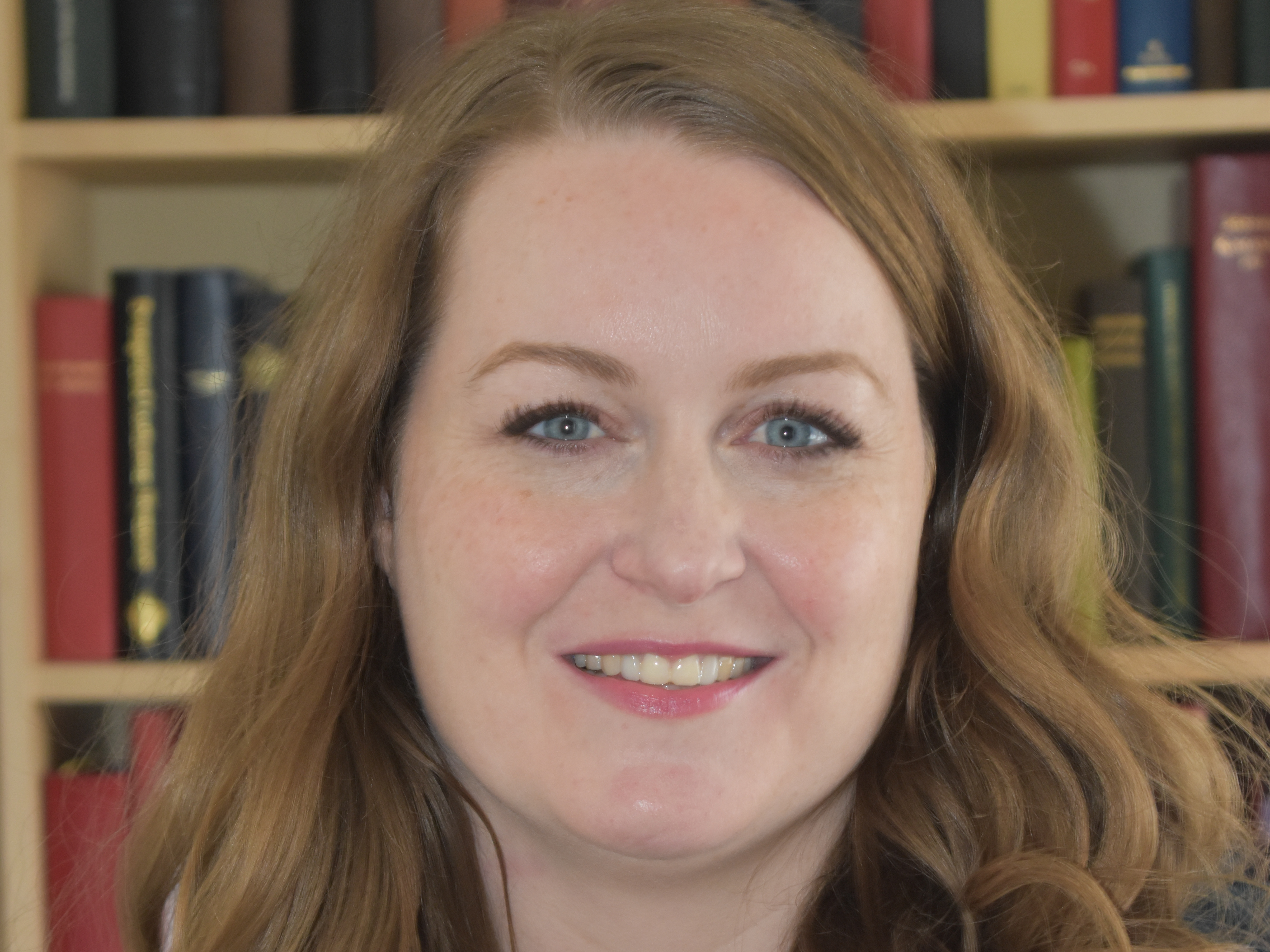
Nancy Murphy
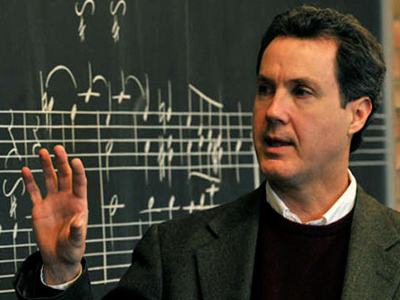
Wayne C. Petty

René Rusch

Joshua Tanis
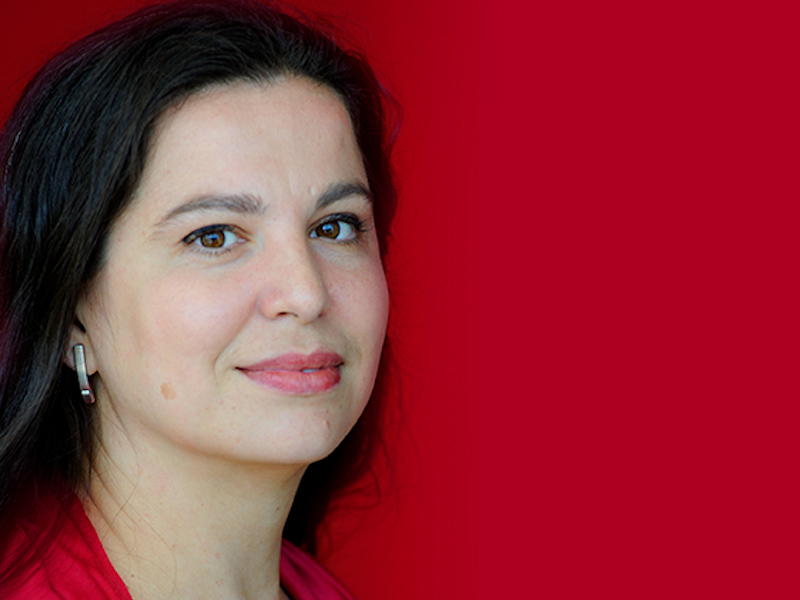
Aleksandra Vojčić
Degrees
Distinguished by the range of achievement in scholarship, and by the broad diversity of approaches fostered in research and in teaching, a guiding principle of the department is that music theory does not stand alone as a specialty, but is integrated with both other musical and extra-musical disciplines.
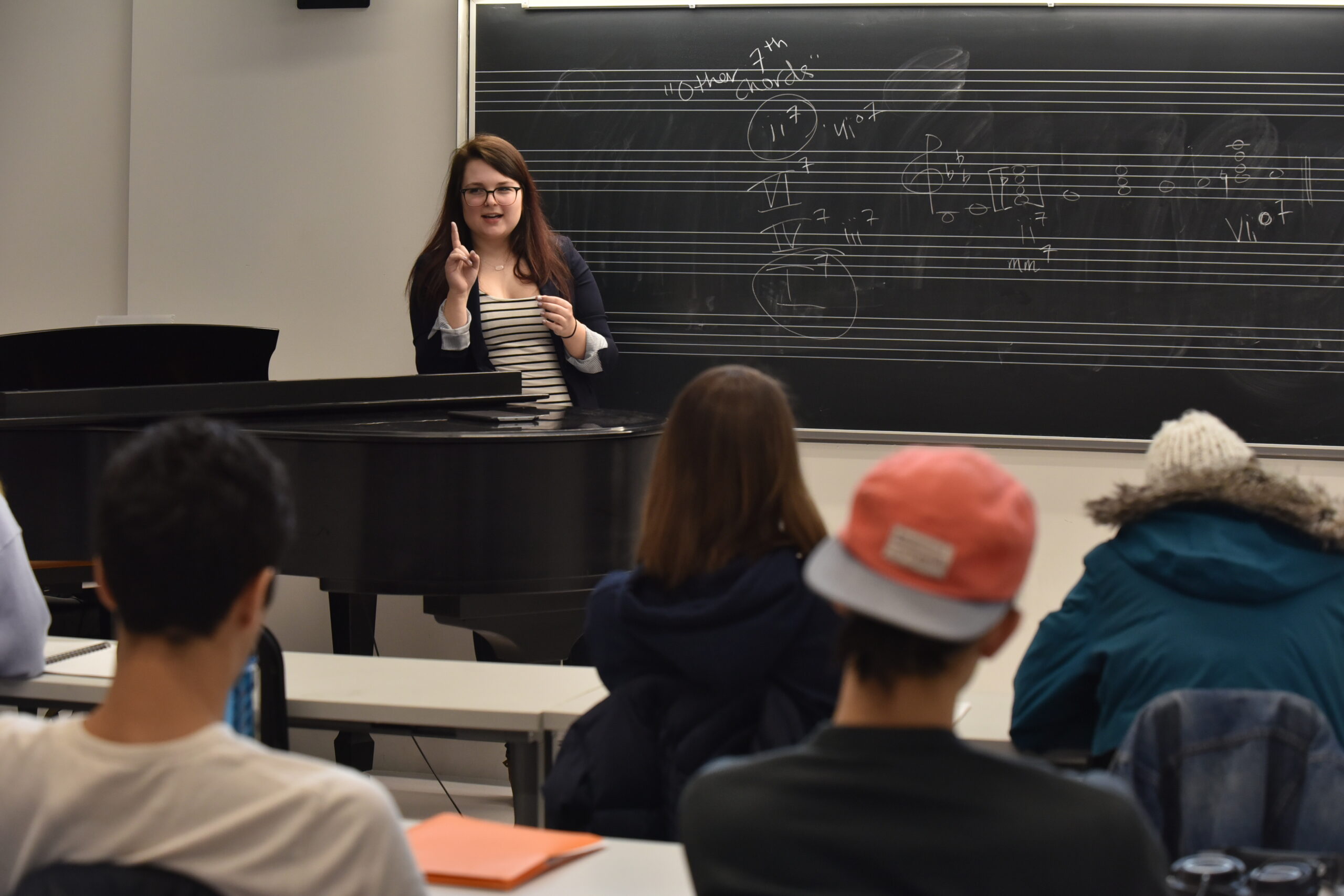
Undergraduate
Bachelor of Music
Minors
Graduate
Doctor of Philosophy
Certificate
Students
Research
The Department of Music Theory is distinguished by the range of achievement in scholarship of both the faculty and students and by the broad diversity of approach which is fostered. One of the guiding principles of the department is that music theory does not stand alone as a discipline.
Faculty members are active as composers, performers, and interdisciplinary scholars in such areas as philosophy, psychology, and critical studies. Students explore cognate fields such as art history, literature, philosophy, linguistics, and psychology to advance inquiry in the field of music theory. Areas of scholarly interest represented by faculty members and in course offerings include theories of musical experience, as well as post-tonal theory, Schenkerian theory, twelve-tone theory, transformational theory, theories of style, gender, jazz, popular music, and the study of the compositional process.
2020-
2023
Fournier, Karen. 2023. “Jayne County, Laura Jane Grace, and the HerStory of Transgender Punks in America,” in Women in Rock Memoirs: Music, History, and Life-Writing. Eds. Cristina Garrigós and Marika Ahonen. Oxford: Oxford University Press.
Fournier, Karen. 2023. “Gender, Rage, and Age in Alanis Morissette’s ‘Reasons I Drink’,” Gender and Ageing in Popular Culture. (University of Graz, Aging Studies Series): 98-115. Eds. Nicole Haring, Roberta Maierhofer, and Barbara Ratzenböck. Bielefeld, Germany: Bielefelder Verlag.
Hannaford, Marc E. 2023. “Theory on the South Side: Muhal Richard Abrams’s Engagement with Joseph Schillinger’s System of Musical Composition.” Journal of the Society for American Music 17 (1): 43–67.
Murphy, Nancy. 2023. Times A-Changin’: Flexible Meter as Self-Expression in Singer-Songwriter Music. Oxford: Oxford University Press.
Murphy, Nancy. 2023. “Buffy Sainte-Marie’s Self-Expressive Voice,” Music Theory Online Volume 29, Number 3, September 2023.
Rusch, René. 2023. Schubert’s Instrumental Music and Poetics of Interpretation. Bloomington: Indiana University Press.
Rusch, René. 2023. “Rethinking Self-Referentiality in Schubert’s Setting of Platen’s ‘Die Liebe hat gelogen,’ D. 751 (op. 23, no. 1).” In Perspectives on Contemporary Music Theory: Essays in Honor of Kevin Korsyn, edited by Bryan Parkhurst and Jeffrey Swinkin, 52–80. London and New York: Routledge.
2022
Everett, Walter. “Lepidopteron cum strabismus: The Hidden Promise of Vanessa, the Erratic Adolescent Doodler.” In Song Interpretation in 21st-Century Pop Music, Vol. 2, ed. Ralf von Appen, André Doehring, Dietrich Helms and Allan F. Moore. Ashgate.
Everett, Walter. Sex and Gender in Rock and Pop from the Beatles to Beyoncé, trade book with multimedia materials for a general readership, co-authored with Katie Kapurch. Bloomsbury Press.
Fournier, Karen. 2022. “Wartime Propaganda as Cultural Critique in Julien Temple’s Punk Can Take It’ (1979),” in Punk and Philosophy: Research and Destroy: 71-79. Eds. Josh Heter and Richard Greene. Chicago: Carus Books.
Hannaford, Marc E. 2022. “On the Inside: Jazz Liner Notes as a Music-Theoretical Medium.” In The Oxford Handbook of Public Music Theory, edited by J. Daniel Jenkins. New York: Oxford University Press.
Korsyn, Kevin, Imagining Fragment X: Completing Bach’s Art of Fugue (Oxford University Press, forthcoming).
2021
Hannaford, Marc. “Affordances and Free Improvisation: An Analytical Framework.” In Making Music Together: Analytical Perspectives on Musical Interaction. Ed. Garrett Michaelsen and Chris Stover (University of Chicago Press, forthcoming).
Hannaford, Marc E. 2021. “Fugitive Music Theory and George Russell’s Theory of Tonal Gravity.” Theory and Practice 46: 47–81.
Korsyn, Kevin. “Musical-Poetic Images in Schubert: David Lewin and Anthony Newcomb on Meaning in Auf dem Flusse.” In Networks: Moving Art, Moving Ideas, ed. Heidi C. Gearhart and Catherine R. Carver (Brepols Publishers, forthcoming).
Korsyn Kevin. Completion of Bach, Contrapunctus 14 from Die Kunst der Fuge, Margaret Phillips, organist, recorded at St. George’s, Hanover Square, Regent Records (forthcoming).
Martin, Nathan. “Rousseau’s air chinois.“ Eighteenth-Century Music (forthcoming).
Martin, Nathan. “Osmin’s Rage Aria.” In Analyzing Mozart’s Operas. Ed. Nathan John Martin and Lauri Suurpää. Leuven: Peeters, forthcoming).
Vojčić, Aleksandra. “Time-Space in Pulse-stream Forms.” In Music and Spatiality. Ed. Ivana Ilić, Jelena Mihajlović-Markovi, and Miloš Zatkalik (forthcoming).
2020
Everett, Walter. “Becoming Beethoven: Theorizing Bonner Zeit Transitions,” Music Theory and Analysis 7/2 (April): 113-80.
Everett, Walter. “The Beatles’ ‘Day Tripper’: A Tortured Stretching of the Twelve-Bar Blues.” In The Routledge Companion to Music Theory Pedagogy, ed. Leigh van Handel. Routledge.
Everett, Walter, and Katie Kapurch. “If You Become Naked: Sexual Honesty on the Beatles’ White Album,” Rock Music Studies 7/3.
Everett, Walter. “The Love There That’s Sleeping: Guitars of the Early Beatles.” In The Beatles in Context, ed. Ken Womack. Cambridge University Press.
Fournier, Karen. “Punk Fanzines, Music Journalism, and the Problem of Female Representation in/of Punk,” in Media Narratives in Popular Music, ed. Chris Anderton and Martin James. Bloomsbury Academic Press.
Hannaford, Marc. “Stretching Boundaries: Improvised Interaction across Liminal Spaces,” Sound American 23: “The Alien Issue.” https://soundamerican.org/issues/alien.
Heneghan, Áine, “Principles of Form.” In The Routledge Companion to Music Theory Pedagogy, ed. Leigh VanHandel. Routledge.
Heneghan, Áine. “‘Da mihi manum’: An Irish Arcanum?” In Trends in World Music Analysis. Ed. N. Dinnerstein, S. Mukherji, and L. Shuster (Routledge, forthcoming).
Heneghan, Áine, “New Light on Schoenberg’s Sketching Method?” Journal of the Arnold Schönberg Center 17.
Vojčić, Aleksandra. “The Return of Ars subtilior? Rhythmic Complexity in the Chantilly Codex and in Selected Twentieth-Century Works.” In The Oxford Handbook of Music and Medievalism. Ed. Stephen Meyers and Kirsten Tri. New York: Oxford University Press.
2010-2019
2019
Everett, Walter. What Goes On: The Beatles, Their Music and Their Time, textbook and extensive multimedia materials for non-music majors, co-authored with Tim Riley. Oxford University Press.
Everett, Walter. “Children of Nature: Origins of the Beatles’ Tabula Rasa.” In The Beatles through a Glass Onion: Reconsidering the White Album, ed. Mark Osteen. University of Michigan Press.
Fournier, Karen. “The Politics of Representation in Early British Punk Videos: Détournement and the Moving Image”. In The Bloomsbury Handbook of Popular Music Video Analysis, ed. Lori Burns and Stan Hawkins. Bloomsbury Academic Press, pp. 129-42.
Hannaford, Marc. “1984: John Zorn Completes Cobra,” Sound American 21: “The Change Issue.” https://soundamerican.org/issues/change
Hannaford, Marc. Review of Making It Up Together: The Art of Collective Improvisation in Balinese Music and Beyond by Leslie A. Tilley (Chicago University Press, 2019), Music Theory Online (forthcoming).
Heneghan, Áine, “Liquidation and Its Origins,” Journal of Music Theory 63/1: 71–102.
Heneghan, Áine, “Rethinking Repetition: Interrogating Schoenberg’s Writings,” Perspectives of New Music 57/1–2.
Heneghan, Áine, “The Theme of Webern’s Variationen für Klavier, Op. 27, Third Movement,” Music Theory & Analysis6/1.
Martin, Nathan. “History for Theorists.” Music Theory Online. 25/3.
Martin, Nathan. “Of Polyps and Plenitude.” Review of Wye Allanbrook, The Secular Commedia(Oakland: University of California Press, 2014). Music Theory and Analysis 6: 148-73.
Martin, Nathan. “Silent Representation and the Representation of Silence: Music and Pantomine in Rousseau.” In Silence, implicite et non-dit chez Rousseau/Silence, the Implicit, and the Unspoken in Rousseau, ed. by Brigitte Weltman-Aron, Ourida Mostefai, and Peter Westmoreland. Leiden: Brill.
2018
Fournier, Karen. “Christ from Chaos: Redemption through Rebellion in Christian Hardcore.” In Finding God in the Devil’s Music: Critical Essays on Rock and Religion. Eds. Alex DiBlasi and Robert McParland. McFarland Publishing, pp. 62-73.
Heneghan, Áine, “Eisler’s Klavierstücke für Kinder as Kompositionslehre: Composition, Analysis, Pedagogy,” Theory and Practice 43: 111–30
Heneghan, Áine, “Schoenberg’s Sentence,” Music Theory Spectrum 40/2: 179–207.
Heneghan, Áine, “Schoenberg’s Fundamentals of Musical Composition: A Source Study,” Journal of the Arnold Schönberg Center 15: 163–89.
Korsyn, Kevin, French translation of Decentering Music: A Critique of Contemporary Musical Research (Cité de la musique, forthcoming).
Korsyn, Kevin, “Composition Lessons with Bach,” BACH: Journal of the Riemenschneider Bach Institute,49/2.
Korsyn, Kevin, Completion of Contrapunctus 14, in Johann Sebastian Bach, The Art of Fugue, Craig Sheppard, piano, Roméo Records 7328.
Martin, Nathan. “Form.” In The Cambridge Haydn Encyclopedia. Edited by Caryl Clark and Sarah Day-O’Connell. Cambridge: Cambridge University Press. Forthcoming.
Vojcic, Aleksandra, “’What is Dead May Never Die’: Ghosts and Memories in Milica Paranosić’s The Tiger’s Wife: Prologue (2012).” In Analytical Essays on Music by Women Composers: Electroacoustic, Multimedia, and Experimental Music, 1950-2015, ed. Laurel Parsons and Brenda Ravencroft. New York: Oxford University Press.
Vojcic, Aleksandra, “From Medieval Codices to Modernist Works.” In The Oxford Handbook of Music and Medievalism, ed. Stephen Meyer and Kirsten Yri. New York: Oxford University Press.
2017
Guck, Marion, “Perceptions, Impressions: When Is Musical Hearing Hearing-As?” Music Theory and Analysis, 4/2.
Guck, Marion, “Analytical Relationships,” The Oxford Handbook of Concepts in Music Theory.
Hall, Patricia, ed. The Oxford Handbook on Music Censorship. New York: Oxford University Press.
Hannaford, Marc. “Subjective (Re)positioning in Musical Improvisation: Analyzing the Work of Five Female Improvisers,” Music Theory Online 23, no. 2.
Hannaford, Marc. Review of Negotiated Moments: Improvisation, Sound, and Subjectivity, edited by Gillian Siddall and Ellen Waterman (Duke University Press, 2016), Women & Music: A Journal of Gender and Culture 21: 202–8.
(to 2017): Hannaford, Marc. “Marc Hannaford: Improvisation Across Contexts and Domains,” Loud Mouth [an online journal of Australian music].
Martin, Nathan. “Jean-Jacques Rousseau” (2017). Oxford Bibliographies. Music. Edited by Bruce Gustafson. http://www.oxfordbibliographies.com/
Martin, Nathan, “L’image de Rousseau musicien au cours des siècles.”Annales Jean-Jacques Rousseau 53: 203–23.
Martin, Nathan, “Rousseau, Rameau, and the ‘Leçons de musique.’”Theoria 23: 5–82.
Martin, Nathan. “Dahlhaus’ ‘Was heisst “Geschichte der Musiktheorie”?’ Between Kuhn and Weber.” Theoria 24: 127–40.
Vojcic, Aleksandra, “Beat Patterns and Beat Hierarchy—From Aksak To Composite Meter.”Current Musicology 98: 41-70.
2016
Hannaford, Marc, and Andrew Goldman. “The Challenge of Comparing Improvisation Across Domains,” American Music Review 45/2 (Spring).
Korsyn, Kevin, “At the Margins of Music Theory, History, and Composition: Completing the Unfinished Fugue in Die Kunst der Fuge by J.S. Bach,” Music Theory & Analysis (International Journal of the Dutch-Flemish Society for Music Theory), 3.
Martin, Nathan, “Lire le Dictionnaire de musique de Jean-Jacques Rousseau: l’exemple de l’article ‘Dissonnance.’” Revue musicorum 17: 13–38.
Martin, Nathan, and William E. Caplin, “The ‘Continuous Exposition’ and the Concept of Subordinate Theme.”Music Analysis 35: 4–43.
Martin, Nathan, “Diephrase harmoniquebei Rameau.”InRezeption und Kulturtransfer: Deutsche und französische Musiktheorie nach Rameau. Edited by Birger Petersen, 29–50. Spektrum Musiktheorie 4. Mainz: Are Verlag.
Martin, Nathan, “Formenlehre Goes to the Opera: Examples from Don Giovanni.” In Mozart in Prague: Essays on Performance, Patronage, Sources, and Reception. Proceedings of the International Conference of the Mozart Society of America/Society for Eighteenth-Century Music Conference in Prague, 9–13 June 2009. Edited by Kathryn Libin, 371–402. Prague: Academy of Sciences of the Czech Republic.
Rusch, René, Keith Salley, and Chris Stover, “Capturing the Ineffable: Three Transcriptions of a Sonny Rollins Jazz Solo.” Music Theory Online 22/3.
Cecila Taher, René Rusch, and Stephen McAdams, “Effects of Repetition on Attention in Two-Part Counterpoint.” Special issue, “Milestones in Music Cognition,” Music Perception: An Interdisciplinary Journal 33/3 (February): 306-318.
2015
Everett, Walter, “Death Cab for Cutie’s ‘I Will Follow You Into the Dark’ as Exemplar of Conventional Tonal Behaviour in Recent Rock Music,” in Song Interpretation in 21st-Century Pop Music, ed. Ralf von Appen et al. (Surrey, England: Ashgate).
Fournier, Karen. The Words and Music of Alanis Morissette (Santa Barbara, CA: Praeger Press).
Fournier, Karen, “Nazi Signifiers and the Narrative of Class Warfare in British Punk,” in Beyond “No Future”: A German Punk Reader, ed. Mirko Hall, Seth Howes and Cyrus Shahan (New York: Bloomsbury Academic Press).
Martin, Nathan, “Mozart’s Sonata-Form Arias.” In Formal Functions in Perspective: Essays on Musical Form from Haydn to Adorno. Edited by Steven Vande Moortele, Julie Pedneault-Deslauriers, and Nathan John Martin (Rochester: University of Rochester Press), 37-73.
Martin, Nathan, and Julie Pedneault-Deslauriers, “The Mozartean Half Cadence.” In What is a Cadence? Theoretical and Analytical Perspectives on Cadences in the Classical Repertoire. Edited by Pieter Bergé and Markus Neuwirth (Leuven: Leuven University Press), 183-211.
Martin, Nathan, Steven Vande Moortele, and Julie Pedneault-Deslauriers, eds., Formal Functions in Perspective: Essays on Musical Form from Haydn to Adorno (Rochester: University of Rochester Press).
Martin, Nathan, Review of Mark Darlow, Dissonance in the Republic of Letters: The Querelle des Gluckistes et des Piccinnistes (Oxford: Legenda, 2013). Music and Letters 96: 282–85
Vojcic, Aleksandra, “On Taking a Walk.” In Birtwistle Studies, ed. David Beard, Kenneth Gloag, and Nicolas Jones (Cambridge: Cambridge University Press), 232-63.
2014
Martin, Nathan, “Larsen’s Legacy: The Three-Part Exposition and the New Formenlehre.” HAYDN: Online Journal of the Haydn Society of North America 4.2.
Martin, Nathan, “Morgengruß.” Music Theory & Analysis 1: 141–45.
Martin, Nathan, and Steven Vande Moortele, “Formal Functions and Retrospective Reinterpretation in the First Movement of Schubert’s String Quintet, D. 956.” Music Analysis 33: 130–55.
Martin, Nathan, Review of Cynthia Verba, Dramatic Expression in Rameau’s Tragédie en Musique: Between Tradition and Enlightenment (Cambridge: Cambridge University Press, 2013). Notes: 74–78.
Martin, Nathan, trans., Schwab-Felisch, Oliver. “The Butterfly and the Artillery: Models of Listening in Schenker and Gjerdingen.” Music Theory & Analysis 1: 107–20.
Rusch, René, Review of Lauri Suurpää, Death in Winterreise: Musico-Poetic Associations in Schubert’s Song Cycle(Bloomington: Indiana University Press). Music Theory Online 20.3.
Rusch, René, Review of Suzannah Clark, Analyzing Schubert (Cambridge: Cambridge University Press, 2011). Music Theory and Analysis 1/1-2 (formerly The Dutch Journal of Music Theory) (October): 170-184.
Vojcic, Aleksandra, “Beat Patterns and Beat Hierarchy—From Aksak To Composite Meter.” Current Musicology 98 (Fall).
Vojcic, Aleksandra, “Henri Lefebvre and Elements of Rhythmanalysis.” Theoria 21: 71–103.
2013
Everett, Walter, Los Beatles como músicos: De Revolver a la Antología. Traducción de Mónica Herrero (Buenos Aires: Eterna Cadencia).
Everett, Walter, “The Beatles,” The Grove Dictionary of American Music.
Fournier, Karen. Review of Pete Dale’s Anyone Can Do It: Empowerment, Tradition, and the Punk Underground. In The North American British Music Studies Association Newsletter (March).
Gosman, Alan, “The Distant Pianissimo: The Revision of Beethoven’s String Quartet, Op. 18, No. 2, Finale,” Journal of Musicological Research 32/3: 233-47.
Gosman, Alan (with Lewis Lockwood), Beethoven’s “Eroica” Sketchbook: A Critical Edition (University of Illinois Press).
Rusch, René, “Crossing Over with Brad Mehldau’s Cover of Radiohead’s ‘Paranoid Android’: The Role of Improvisation in the Creation of an Intertext.” Music Theory Online 19.4.
Rusch, René, “Beyond Homage and Critique? Schubert’s Sonata in C minor, D. 958, and Beethoven’s Thirty-Two Variations in C minor, WoO 80.” Music Theory Online 19.1.
Rusch, René, “Schenkerian Analysis, Neo-Riemannian Theory, and Late Schubert: A Lesson From Tovey.” Journal of the Society for Musicology in Ireland 8 (2012-13): 3-20.
Satyendra, Ramon, “Incorporating Voice Permutations into the Theory of Neo-Riemannian Groups and Lewinian Duality,” co-authored with Thomas Fiore and Thomas Noll, Mathematics and Computation in Music 7937 (Berlin: Springer Verlag).
Satyendra, Ramon, “Morphisms of Generalized Interval Systems and PR-Groups,” co-authored with Thomas Fiore and Thomas Noll, Journal of Mathematics and Music 7/1 (30 April): 3-27.
Vojcic, Aleksandra, “Temporal Structuring in Colin Matthews’s Studies in Velocity.” In Analyzing the Music of Living Composers(and Others), ed. Jack Boss et al. (Newcastle upon Tyne: Cambridge Scholars Publishing), 254-74.
2012
Everett, Walter, “The Representation of Meaning in Post-Millennial Rock,” Beiträge zur Popularmusikforschung 38: 149-169.
Fournier, Karen. “The Clash, London Calling,” “The Ramones, Rocket to Russia,” and “The Sex Pistols: Never Mind the Bollocks,” in Albums, ed. James E. Perone (Santa Barbara: Praeger).
Gosman, Alan. “Canonic Threads and Large-Scale Structure in Canons,” Gamut: Online Journal of the Music Theory Society of the Mid-Atlantic 5/1: 133-84.
Mead, Andrew, Review of The Twelve-Tone Music of Luigi Dallapiccola, by Brian Alegant. twentieth-century music 8/1: 119-124.
Rusch, René, “Schubert’s Drei Klavierstücke, D. 946, nos. 1 and 2 and the Case of the Crossed-Out C Section.” Journalof Music Theory 56/1 (Spring): 53–86.
2011
Fournier, Karen, “Theorizing Conceptual Change in Music Scholarship,” The Journal of Music and Meaning 10 (July): 1-25.
Hall, Patricia, Berg’s Wozzeck (Oxford University Press).
Korsyn, Kevin, “The Aging of the New Musicology.” In Approaches to Music Research: Between Practice and Epistemology, ed. Nico Schüler and Leon Stefanija (Frankfurt am Main: Peter Lang), 9-24.
Mead, Andrew, Review of Understanding Post-Tonal Music and Anthology of Post-Tonal Music, by Miguel A. Roig-Francolí. Gamut: Journal of the Music Theory Society of the Mid-Atlantic 4/1.
Rusch, René, “Rethinking Conceptions of Unity: Schubert’s Moment Musical in A-flat Major, D. 780 (op. 94), no. 2.” Musical Analysis 30/1: 58–88.
Rusch, René, Review of Ryan McClelland, Brahms and the Scherzo: Studies in Musical Narrative (Surrey, England: Ashgate, 2010), Intersections 30/2: 127–30.
Satyendra, Ramon, “Musical Actions of Dihedral Groups,” co-authored with Alissa Krans and Thomas Fiore. Translated into Chinese by Shing-Tung Yau, Lo Yang, and Lizhen Ji, eds. Mathematics and Humanities 6 (Beijing: Higher Education Press; and Somerville, MA: International Press) (in press).
2010
Everett, Walter, “‘If You’re Gonna Have a Hit’: Intratextual Mixes and Edits of Pop Recordings,” Popular Music 29/2: 229-250.
Fournier, Karen, “Survival of the Fittest: An Evolutionary Model of Music Scholarship,” College Music Symposium 49-50 (Fall): 33-42.
Fournier, Karen (with Betty Anne Younker and Mark Clague), “Building Bridges Across Music Theory, Music History, and Music Education,” College Music Symposium 49-50 (Fall): 140-53.
Heneghan, Áine, “Jenny’s Welcome to Charlie” (traditional reel, arranged for harp). In Rogha na gCruitirí /Harper’s Choice: 100 Traditional Tunes for the Irish Harp, edited by Áine Ní Dhubhghaill, Anne-Marie O’Farrell and Aibhlín McCrann (Dublin: Cairde na Cruite 114–115).
Hubbs, Nadine, “On the Uses of Shame and Gifts of a Bloodmobile: Musings from a Musical Queer Apprenticeship.” In Gay Shame, ed. David M. Halperin and Valerie Traub (University of Chicago Press).
Mead, Andrew, “Looking Back: Lessons Learned about Tonal Music from a Post-Tonal Perspective,” Perspectives of New Music 47/2 (Summer): 5-35.
Vojcic, Aleksandra, “Sonorous Image of Time-Stretching in Birtwistle’s ‘Harrison’s Clocks,'” Perspectives of New Music48/1 (Winter): 5-43.
Vojcic, Aleksandra, “Decoding Scriabin’s Notation in the Early Preludes.” In Music Theory and Interdisciplinarity, ed. Christian Utz. Eighth Congress of the Gesellschaft für Musiktheorie, Graz 2008 (Saarbrücken: Pfau), 351-62.
2000-2009
2009
Everett, Walter, The Foundations of Rock From “Blue Suede Shoes” to “Suite: Judy Blue Eyes” (Oxford University Press).
Everett, Walter, “Any Time at All: The Beatles’ Free Phrase Rhythms.” In The Cambridge Companion to the Beatles, ed. Kenneth Womack (Cambridge University Press), 183-199.
Gosman, Alan, “Committing to Opening Theme Possibilities: How Beethoven’s Sketchbook Struggles are Reflected in Two Symphonic Movements.” In Keys to the Drama: Nine Perspectives on Sonata Forms, ed. Gordon Sly (Ashgate Press), 177-198.
Gosman, Alan. “From Melodic Patterns to Themes: The Sketches for the Original Version of the ‘Waldstein’ Sonata, Op. 53.” In Genetic Criticism and the Creative Process: Essays from Music, Literature, and Theater, ed. Joseph E. Jones and William Kinderman (University of Rochester Press), 97-109.
Heneghan, Áine, “The ‘Popular Effect’ in Schoenberg’s Serenade.” In Schoenberg’s Chamber Music, Schoenberg’s World, edited by James K. Wright and Alan M. Gillmor (Hillsdale, NY: Pendragon Press), 37-51.
Hubbs, Nadine, ed., “Queer Musical Orientalism,” by Philip Brett, Echo: A Music-Centered Journal 9/1 (Fall).
Korsyn, Kevin, “Foreword,” Musicological Annual / Muzikoloski Zbornik 45/2 (Special Issue on Music and Psychoanalysis): 5-6.
Korsyn, Kevin, “Musical Reception History and the Trauma of Real History: Decoding the Pantomime in Haydn’s ‘Farewell’ Symphony,” Musicological Annual / Muzikoloski Zbornik 45/2: 143-158.
Korsyn, Kevin, “Schenker’s Vienna: Nicholas Cook on Culture, Race and Music Theory in fin-de-siècle Austria,” Music Analysis 28/1 (March): 153-179.
Korsyn, Kevin (with Leon Stefanija, co-editor), Musicological Annual / Muzikoloski Zbornik 45/2: Special issue on Music and Psychoanalysis, with contributions from Slavoj Zizek, Lawrence Kramer, David Schwarz, Christian Bielefeldt, Bernd Oberhoff and others.
Mead, Andrew, “The String Quartets of Milton Babbitt.” In Intimate Voices: Aspects of Construction and Character in the Twentieth-Century String Quartet, ed. Evan Jones (University of Rochester Press).
2008
Gosman, Alan, “Canonic Patterns: Reframing the Puzzle,” Theory and Practice 34: 1-29.
Hall, Patricia, “Berg’s Büchner Text and the Genesis of Form in Wozzeck,” Theory and Practice 33: 249:-271.
Heneghan, Áine, “Schoenberg’s Compositional Philosophy, the Three Piano Pieces, Op. 11, and his Subsequent Volte-Face.” In Musical Currents from the Left Coast, edited by Jack Boss and Bruce Quaglia ( Newcastle upon Tyne: Cambridge Scholars Publishing), 299-314.
Hubbs, Nadine, Review essay on The Music and Art of Radiohead, ed. Joseph Tate, and Radiohead’s OK Computer, by Dai Griffiths, Popular Music 27/3: 516–518.
Hubbs, Nadine, Review of Bohemian Los Angeles and the Making of Modern Politics, by Daniel Hurewitz. American Historical Review 113/1: 860–861.
Mead, Andrew, “How to Be; What to Do: Character and Action in Ralph Shapey’s String Quartet No. VI,” Contemporary Music Review 27/4-5: 489-512.
Rusch, René, Preface to “Paul Graener: Symphonietta for Strings and Harp.” Repertoire & Opera Explorer (Münich: Musikproduktion Höflich): 1–3. (Translated into German by Branford Robinson.)
Satyendra, Ramon, “Montage, Tempo of Transformation, and Block Form in Ralph Shapey’s “Seven” for Two Pianos,” Contemporary Music Review 27/4-5: 477-487.
2007
Everett, Walter, “Beyond the Palace: Casing the Promised Land” [A study of the theme of transcendence in the songs of Bruce Springsteen], Interdisciplinary Literary Studies 9/1 (Fall): 81-94.
Everett, Walter, Expression in Pop-Rock Music: Critical and Analytical Essays, 2nd ed. (Routledge Press).
Everett, Walter, “Pitch Down the Middle.” In Expression in Pop-Rock Music: Critical and Analytical Essays, 2nd ed. (Routledge Press), 111-174.
Everett, Walter, “Westergaard’s Theory of Tonal Rhythm,“ In Theory Only 13/5-8 (June): 35-53.
Hall, Patricia, “Music and Politics in the Classroom: A Course for Non-Majors,” Music and Politics (Winter).
Heneghan, Áine, Review of: Kathryn Bailey, “Composing with Tones”: A Musical Analysis of Schoenberg’s Op. 23 Pieces for Piano (London: Royal Musical Association, 2001). Music Analysis 26, no. 3: 373–380.
Hubbs, Nadine, “‘I Will Survive’: Musical Mappings of Queer Social Space in a Disco Anthem.” (NH) Popular Music26.2 (May): 231-244.
Korsyn, Kevin, “Communication,” Journal of the American Musicological Society 60/2: 464-471.
Mead, Andrew, “On Tempo Relations,” Perspectives of New Music 45/1: 64-109.
Satyendra, Ramon, “Musical Actions of Dihedral Groups,” co-authored with Alissa Krans and Thomas Fiore, American Mathematical Monthly (in press).
Vojcic, Aleksandra, “Understanding the Limping Meters: From Brass Band to Ligeti.” In Principles of Music Composing, ed. Rimantas Janeliaukskas (Lithuanian Academy of Music and Theatre), 51-60.
2006
Everett, Walter, “New Drummer Ringo Starr.” In Read the Beatles: Classic and New Writings on the Beatles, Their Legacy, and Why They Still Matter, ed. June Skinner Sawyer and Astrid Kirchherr (Penguin Books), 292-95.
Everett, Walter, “Painting Their Room in a Colorful Way: The Beatles’ Exploration of Timbre.” In Reading the Beatles: Cultural Studies, Literary Criticism, and the Fab Four, ed. Kenneth Womack and Todd Davis (State University of New York Press), 71-94.
Guck, Marion, “Analysis as Interpretation: Interaction, Intentionality, Invention,” Music Theory Spectrum 28/2 (Fall): 191-209.
Heneghan, Áine, Review of: Norton Dudeque, Music Theory and Analysis in the Writings of Arnold Schoenberg(Aldershot and Burlington, VT: Ashgate, 2006). Journal of the Society for Musicology in Ireland 3 (2007–08): 159–164.
Hubbs, Nadine, Review essay on Queer Episodes in Music and Modern Identity, ed. Sophie Fuller and Lloyd Whitesell. Women and Music: A Journal of Gender and Culture 10: 80–88.
Petty, Wayne. “Thoughts on Schenker’s Treatment of Diminution and Repetition in Part III of Free Composition, and Its Implications for Analysis.” In Structure and Meaning in Tonal Music, ed. David Gagné and L. Poundie Burstein (Pendragon Press).
2005
Everett, Walter, “Deep-Level Portrayals of Directed and Misdirected Motions in Nineteenth-Century Lyric Song,” Journal of Music Theory 48/1 (Spring): 25-68.
Fournier, Karen, “Cultural Capital as a Determinant of Trends in Music Research,” Culture and Power: Culture and Society in the Age of Globalisation 10: 191-202.
Hall, Patricia, “Berg’s Sketches and the Inception of Wozzeck: 1914-18,” The Musical Times (Autumn): 5-24.
Heneghan, Áine, Review of: Jean-Jacques Dünki, Schönbergs Zeichen: Wege zur Interpretation seiner Klaviermusik (Publikationen der Internationalen Schönberg-Gesellschaft, 6 (Vienna: Verlag Lafite, 2005). Notes, the Quarterly Journal of the Music Library Association 63, no. 4 (June 2007): 864–866.
Heneghan, Áine, “An Affinity with Bach: Form and Function in Schoenberg’s ‘New Polyphony.’” Journal of the Arnold Schönberg Center 7: 99–123.
Hubbs, Nadine, Foreword to The Encyclopedia of American Music, Classical volume (Facts on File). (Professor Hubbs is also member of encyclopedia editorial board.)
Korsyn, Kevin. “Music, Deconstruction, Amnesia: Notes on the Musicological Reception of Deconstruction,” Musicological Annual / Muzikoloski Zbornik 41/2: 147-152.
Korsyn, Kevin, “Musicology as an Institutional Discourse: Decomstruction and the Future of Musicology,” Musicological Annual / Muzikoloski Zbornik 41/2: 47-54.
Mead, Andrew. “For Jim / Making Music in America,” Open Space 7 (Fall): 39-50.
Petty, Wayne. “C.P.E. Bachs Einfluss auf die Theorien von Heinrich Schenker,” trans. Ulrich Leisinger. In Carl Philipp Emanuel Bach Konzepte 4, ed. Hans-Günter Ottenberg and Ulrich Leisinger (Konzerthalle Carl Philipp Emanuel Bach).
Satyendra, Ramon, “Generalized Contextual Groups” (co-authored with Thomas Fiore), Music Theory Online 11/3.
Satyendra, Ramon, “An Informal Introduction to Lewin’s Transformational Theory,” Journal of Music Theory 48/1 (Spring): 1-43.
2004
Everett, Walter, “Making Sense of Rock’s Tonal Systems,” Music Theory Online 10/4; reprinted in Critical Essays in Popular Musicology, ed. Allan Moore (Ashgate, 2007).
Everett, Walter, “A Royal Scam: The Abstruse and Ironic Bop-Rock Harmony of Steely Dan,” Music Theory Spectrum26/2: 201-35.
Guck, Marion, “Dramatic Progression in Haydn, Sonata #46 in Ab, Adagio.” In Engaging Music: Essays in Musical Analysis, ed. Deborah Stein (Oxford University Press), 180-190.
Hall, Patricia, and Friedemann Sallis, eds., A Handbook to Twentieth-Century Musical Sketches (Cambridge University Press).
Hall, Patricia, “A Tale of Two Sketchbooks: Reconstructing and Deciphering Berg’s Sketches for Wozzeck.” In A Handbook to Twentieth-Century Musical Sketches, ed. P. Hall and F. Sallis (Cambridge University Press): 102-113.
Hubbs, Nadine, The Queer Composition of America’s Sound: Gay Modernists, American Music, and National Identity(University of California Press).
Hubbs, Nadine, “Thomson, Virgil.” In Encyclopedia of Lesbian, Gay, Bisexual, and Transgender History in America, ed. Marc Stein (Scribner).
Korsyn, Kevin, “The Death of Musical Analysis? The Concept of Unity Revisited,” Music Analysis 23/2-3 (July): 337-351.
Mead, Andrew, “‘Learn to Draw Bob Hope! Mort Drucker, Arnold Schoenberg and Twelve-Tone Music.” In Engaging Music: Essays in Musical Analysis, ed. Deborah Stein (Oxford University Press), 36-49.
Mead, Andrew, “Listening to Max Reger,” The Musical Quarterly 87/4 (Winter): 681-708.
Mead, Andrew, “‘One Man’s Signal is Another Man’s Noise’: Personal Encounters with Aggregate Music.” In The Pleasure of Modernist Music, ed. Arved Ashby (University of Rochester Press), 259-276.
Satyendra, Ramon, “Analyzing the Unity Within Contrasts: Chick Corea’s ‘Starlight’.” In Engaging Music: Essays in Music Analysis, ed. Deborah Stein (Oxford University Press), 50-64.
2003
Korsyn, Kevin, Decentering Music: A Critique of Contemporary Musical Research (Oxford University Press).
Mead, Andrew, “The Rules of Play: Milton Babbitt, Set Theory and Twelve-Tone Composition,” Proceedings of the Symposium Around Set Theory (IRCAM)
Mead, Andrew, The Writings of Milton Babbitt (ed. Stephen Peles, with Stephen Demski, Andrew Mead, and Joseph Straus) (Princeton University Press).
Petty, Wayne, “Brahms, Adolf Jensen, and the Multi-Movement Work,” Music Analysis 22/1-2: 105-37.
2002
Everett, Walter, “Sistemi tonali nelle Musiche Pop/Rock: Un’Introduzione” (trans. R. Agostini, L. Marconi, and S. Mengozzi), Rivista di Analisi e Teoria Musicale, 79-114.
Everett, Walter, “Detroit and Memphis: The Soul of Revolver.” In “Every Sound There Is”: The Beatles’ Revolver and the Transformation of Rock and Roll, ed. Derek Scott and Russ Reising (Ashgate Press), 25-57.
Everett, Walter, “What a Rock Concert Should Do: Paul McCartney, Driving USA 2002,” Soundscapes 5 (May).
Mead, Andrew, Review of The Essays of Elliott Carter, ed. Jonathan Bernard, Theory and Practice 27: 99-114.
Satyendra, Ramon, “Relational Systems in the Study of Networks and Generalized Intervals,” Indiana Theory Review23/1-2: 133-152.
2001
Everett, Walter. The Beatles as Musicians: The Quarry Men through Rubber Soul (Oxford University Press).
Everett, Walter, “The Future of Beatles Research,” Beatlestudies 3: 25-44.
Everett, Walter, Review of Richard Middleton’s Reading Pop; Music Theory Online 7/6.
Everett, Walter, “A True Story: The Expression of Troubling Societal Values in the Music of Postmodern Rock,” Genre 3: 205-218.
Fournier, Karen, “Towards an Epistemological Model for Music Theory,” Journal of Musicological Research 20/4: 391-411.
Hall, Patricia, “An Electronic Facsimile of the Sketches for Wozzeck,” Computing in Musicology 12-13: 275-282.
Mead, Andrew, “The Sweet Spot: What Composing Has Taught Me about Teaching Music Theory,” Integral 14/15: 48-56.
2000
Everett, Walter, ed. Expression in Pop-Rock Music: A Collection of Critical and Analytical Essays (Garland Press).
Everett, Walter (and John Covach), eds., American Rock and the Classical Music Tradition, special issue of Contemporary Music Review (Harwood Press).
Everett, Walter (and John Covach), eds., Traditions, Institutions and American Popular Music, special issue of Contemporary Music Review (Harwood Press).
Everett, Walter, “Confessions from Blueberry Hell, or, Pitch Can Be a Sticky Substance.” In Expression in Pop-Rock Music: A Collection of Criticial and Analytical Essays, ed. Walter Everett (Garland Press), 269-345.
Everett, Walter, “The Learned vs. the Vernacular in the Songs of Billy Joel.” In American Rock and the Classical Music Tradition, special issue of Contemporary Music Review devoted to the relations between concert and popular musics, ed. John Covach and Walter Everett (Harwood Press), 105-29.
Gosman, Alan, “Rameau and Zarlino: Polemics in the Traité de l’harmonie,” Music Theory Spectrum 22/1 (Spring): 44-59.
Hall, Patricia, “Two Sketches from Alban Berg’s Lulu.” In The Rosaleen Moldenhauer Memorial: “Music History from the Primary Sources.” A Guide to the Moldenhauer Archives, ed. J. Newsom and A. Mann (Washington: Library of Congress): 115-120.
Hall, Patricia, “Der Schaffensprozess von Wozzeck und Lulu: Ein Blick auf Berg’s atonale Methode.” In Alban Berg und seine Zeit, ed. A. Pople (Laaber-Verlag): 231-240.
Hubbs, Nadine, “A French Connection: Modernist Codes in the Musical Closet,” GLQ: A Journal of Lesbian and Gay Studies 6/3: 389-412.
Hubbs, Nadine, “The Imagination of Pop-Rock Criticism.” In Expression in Pop-Rock Music: A Collection of Criticial and Analytical Essays, ed. Walter Everett (Garland Press), 3-29.
Hubbs, Nadine, Review article on Scars of Sweet Paradise: The Life and Times of Janis Joplin, by Alice Echols, Women and Music: A Journal of Gender and Culture 4: 71-75.
Hubbs, Nadine, Review article on “You Better Work!” Underground Dance Music in New York City, by Kai Fikentscher, Indiana Theory Review 21: 187-95.
1990-1999
1999
Dapogny, James, Introductory historical-analytical essays for Jazz at Lincoln Center/Smithsonian Institution Essential Jazz Editions, under general editorship of Wynton Marsalis, of performances of “Black Bottom Stomp,” “The Chant,” and “Grandpa’s Spells” by Jelly Roll Morton’s Red Hot Peppers, and “Potato Head Blues” by Louis Armstrong’s Hot Seven.
Everett, Walter, The Beatles as Musicians: Revolver through the Anthology (Oxford University Press).
Everett, Walter, “‘High Time’ and Ambiguous Harmonic Function.” In Perspectives on the Grateful Dead, ed. Rob Weiner (Greenwood Press), 119-125.
Hall, Patricia, Review of Joseph Straus, The Music of Ruth Crawford Seeger; Music Theory Spectrum 21/1 (Spring): 129-30.
Korsyn, Kevin, “Beyond Privileged Contexts: Intertextuality, Influence, and Dialogue.” In Rethinking Music, ed. Nicholas Cook and Mark Everist (Oxford University Press), 55-72.
Mead, Andrew, “Milton Babbitt at Eighty.” In Perspectives on American Music Since 1950, ed. James Heintze (Garland), 381-428.
Mead, Andrew, “Bodily Hearing: Physiological Metaphors and Musical Understanding,” Journal of Music Theory 43/1: 1-20.
Petty, Wayne, “C. P. E. Bach and the Fine Art of Transposition.” In Schenker Studies 2, ed. Carl Schachter and Hedi Siegel (Cambridge University Press), 49-66.
Petty, Wayne, “Chopin and the Ghost of Beethoven,” 19th-Century Music 22/3: 281-99.
Petty, Wayne, “Koch, Schenker, and the Development Section of Sonata Forms by C. P. E. Bach,” Music Theory Spectrum21/2: 151-73.
1998
Guck, Marion, “Analytical Fictions.” In Music/Ideology: Resisting the Aesthetic, ed. Adam Krims and Henry Klumpenhouwer (Gordon & Breach), 157-177.
Hubbs, Nadine, “Opera and Classical Music.” In The St. James Press Gay and Lesbian Almanac, ed. Neil Schlager (St. James Press), 432-34.
Mead, Andrew, “Shedding Scales: Understanding Intervals in Different Musical Context,” Theory and Practice 22-23: 73-94.
1997
Derr, Ellwood, “Composition with Modules: Intersections of Musical Parlance in works of Mozart and J. C. Bach,” Mozart-Jahrbuch 1997: 249-291.
Everett, Walter, “Swallowed by a Song: Paul Simon’s Crisis of Chromaticism.” In Understanding Rock, ed. John Covach and Graeme Boone (Oxford University Press), 113-153.
Gosman, Alan. “Stacked Canon and Renaissance Compositional Procedure,” Journal of Music Theory 41/2 (Fall): 289-317.
Guck, Marion, “Two Types of Metaphoric Transference.” In Music and Meaning, ed. Jenefer Robinson (Cornell University Press), 201-212.
Guck, Marion, “Rigors of Subjectivity,” Perspectives of New Music 35/2: 53-64.
Hall, Patricia. A View of Berg’s “Lulu” Through the Autograph Sources (University of California Press).
Hall, Patricia, “Compositional Process in Wozzeck and Lulu: A Glimpse of Berg’s Atonal Method.” In The Cambridge Companion to Berg, ed. Anthony Pople (Cambridge University Press): 180-188.
Hall, Patricia, “Two Sketches for Alban Berg’s Lulu in the Bayerische Staatsbibliothek,” International Journal of Musicology 5: 261-268.
Satyendra, Ramon, “Conceptualizing Expressive Chromaticism in Liszt’s Music,” Music Analysis 16/2: 219-52.
Satyendra, Ramon, “Liszt’s Open Structures and the Romantic Fragment,” Music Theory Spectrum 19/1: 184-205.
1996
Dapogny, James, Review of Jelly Roll, Bix and Hoagy: Gennett Studios and the Birth of Recorded Jazz, by Richard Kennedy. American Music 14/2: 225-228.
Derr, Ellwood, “Some Thoughts on the Design of Mozart’s Opus 4 (the ‘Subscription Concertos,’ K. 413-415.” In Mozart’s Piano Concertos: Text, Context, Interpretation (Michigan University Press).
Guck, Marion,”Music Loving, Or the Relationship with the Piece,” Music Theory Online 2.2; reprinted in Journal of Musicology 15/3 (1997): 343-52.
Hubbs, Nadine, “Music of the ‘Fourth Gender’: Morrissey and the Sexual Politics of Melodic Contour.” In Bodies of Writing, Bodies in Performance, ed. Thomas Foster, Carol Siegel, and Ellen E. Berry. Genders 23 (New York University Press), 266-96.
Korsyn, Kevin, “Directional Tonality and Intertextuality.” In The Second Practice of Nineteenth-Century Tonality, ed. William Kinderman and Harald Krebs (Nebraska University Press), 45-83.
1995
Everett, Walter, “The Beatles as Composers: The Genesis of Abbey Road, Side Two.” In Concert Music, Rock, and Jazz Since 1945: Essays and Analytical Studies, ed. Elizabeth West Marvin and Richard Hermann (University of Rochester Press), 172-228.
Mead, Andrew, “Twelve-Tone Composition and the Music of Elliott Carter.” In Concert Music, Rock, and Jazz Since 1945: Essays and Analytical Studies, ed. Elizabeth West Marvin and Richard Hermann (University of Rochester Press), 67-102.
Mead, Andrew, Review of “My Ends are My Beginnings” and “Soli e Duettini by Milton Babbitt,” MLA Notes.
1994
Everett, Walter, “An Update on the Current State of Schenkerian Research: Volumes Edited by Hedi Siegel and Allen Cadwallader,”Theory and Practice 19: 121-52.
Guck, Marion, “Analytical Fictions,” Music Theory Spectrum 16/2: 217-30; reprinted in Music/Ideology: Resisting the Aesthetic, ed. Adam Krims (Gordon & Breach, 1998).
Guck, Marion, “Rehabilitating the Incorrigible,” In Theory, Analysis and Meaning in Music, ed. Anthony Pople (Cambridge University Press), 57-73.
Guck, Marion, “A Woman’s (Theoretical) Work,” Perspectives of New Music 32/1: 28-43.
Hubbs, Nadine, “The 14th Annual New Music and Art Festival at BGSU: New Music on Its Own Term,.” Perspectives of New Music 32/2: 304-15.
Hubbs, Nadine, Liner notes for Music for Brass & Organ (sound recording), The Galliard Brass Ensemble and Marilyn Mason, organ (Musical Heritage Society 513534T).
Korsyn, Kevin, “Brahms Research and Aesthetic Ideology,” Music Analysis 12/1: 89-103.
Korsyn, Kevin, Review of Beethoven’s Ninth Symphony, by Heinrich Schenker. MLA Notes: 1426-28.
Korsyn, Kevin. Review of Wordless Rhetoric: Musical Form and the Metaphor of the Oration, by Mark Evan Bonds. Music Theory Spectrum 16/1: 124-33.
Mead, Andrew, “The Role of Octave Equivalence in Elliott Carter’s Recent Music,” Sonus 14/2: 13-37.
Mead, Andrew, “Webern, Tradition, and ‘Composing with Twelve Tones,'” Music Theory Spectrum 15/2: 173-204.
Mead, Andrew, An Introduction to the Music of Milton Babbitt (Princeton University Press).
Petty, Wayne, “Cyclic Organization in Haydn’s E-flat Sonata Hob. XVI:38,” Theory and Practice 19: 31-55.
1993
Derr, Ellwood, “Mozart’s Sonata for Two Pianos as Exemplification of Compositional Precepts set forth by Mattheson and Kirnberger.” In Kongreßbericht of the International Mozart Congress, Baden bei Wien (1991).
Guck, Marion, “The Endless Round” (rejoinder to J. Bernard, “Cracked Octaves, Warped Perspectives,” PNM 30/2), Perspectives of New Music 31/1: 306-14.
Guck, Marion, “Taking Notice: A Response to Kendall Walton,” Journal of Musicology 11/1: 45-51.
Hubbs, Nadine, Review of A Guide to Schenkerian Analysis, by David Neumeyer and Susan Tepping, Intégral 7: 179-94.
Korsyn, Kevin, “Schenker’s Organicism Reexamined,” Intégral 7: 82-118.
Korsy,n, Kevin, “J. W. N. Sullivan and the Heiliger Dankgesang: Questions of Meaning in Late Beethoven,” Beethoven Forum 2, ed. Christopher Reynolds (University of Nebraska Press), 133-74.
Korsyn, Kevin, Review of Style and Music: Theory, History, and Ideology, by Leonard B. Meyer, Journal of the American Musicological Society 46/3: 469-75.
Mead, Andrew, “‘The Key to the Treasure,'” Theory and Practice 18: 29-56.
1992
Everett, Walter, “Voice Leading and Harmony as Expressive Devices in the Early Music of the Beatles: ‘She Loves You,'” College Music Symposium 32: 19-37.
Guck, Marion, “Varèse Bound,” Perspectives of New Music 30/2: 244-73.
Hubbs, Nadine, “Minimalism and Macroform,” Contemporary Music Forum: Proceedings of the Bowling Green State University New Music & Art Festival 10: 15-22.
Mead, Andrew, Review Article: The Twelve-Note Music of Anton Webern by Kathryn Bailey, Intégral 6: 107-135.
1991
Derr, Ellwood, “Mozart’s Transfer of the Operatic fermata sospesa to his Piano-Concerto First Movements,” Mozart-Jahrbuch 1991: 155-63.
Derr, Ellwood, Reviews of two recent editions of Handel’s Op. 7 Organ Concertos, MLA Notes (Mar.).
Everett, Walter, “Voice Leading, Register and Self-Discipline in Die Zauberflöte,” Theory and Practice 16: 103-26.
Everett, Walter, “Text-Painting in Mozart’s Three Lieder (KV 596-598) of 14 January 1791,” Mozart-Jahrbuch 1991: 201-05.
Guck, Marion, “Two Types of Metaphoric Transfer.” In Metaphor–A Musical Dimension, ed. Jamie C. Kassler; Australian Studies in History, Philosophy & Social Studies in Music, vol. 1 (Paddington, NSW, Australia: The Currency Press), 1-12; reprinted by Gordon & Breach, 1994; republished as “Two Types of Metaphoric Transference” in Music and Meaning, ed. Jenefer Robinson (Cornell, 1997).
Hall, Patricia, “Role and Form in Berg’s Sketches for Lulu.” In Alban Berg: Analytical and Historical Perspectives, ed. D. Gable and R. Morgan (Oxford University Press): 235-259.
Hubbs, Nadine, “Schenker’s Organicism,” Theory and Practice 16: 143-62.
Korsyn, Kevin, “Towards a New Poetics of Musical Influence,” Music Analysis 10/1-2: 3-72.
Mead, Andrew, Review Article: Composition with Pitch Classes: A Theory of Compositional Design by Robert Morris,Perspectives of New Music 29/1: 264-311.
1990
Everett, Walter, “Grief in Winterreise: A Schenkerian Perspective,” Music Analysis 9/2: 157-75.
Hall, Patricia, “Berg’s Sketches for Lulu.” In The Berg Companion, ed. D. Jarman (Macmillan Press Ltd): 235-259.
Korsyn, Kevin, Review of Explorations in Music, the Arts, and Ideas: Essays in Honor of Leonard B. Meyer, ed. Eugene Narmour and Ruth Solie, The Musical Times (March): 148-49.
Korsyn, Kevin, Review of Music: A View from Delft, by Edward T. Cone, The Musical Times (Jan.): 36.
Mead, Andrew, “Twelve-Tone Organizational Strategies: An Analytical Sampler,” Intégral 3: 93-169.
1975-1989
1989
Derr, Ellwood, “Handel’s Use of Scarlatti’s ‘Essercizi per Gravicembalo’ in his Opus 6.” In Göttinger Händel-Beiträge III (Bärenreiter).
Guck, Marion, “Beethoven as Dramatist,” College Music Symposium 29: 8-18.
Korsyn, Kevin, “Tovey’s Analyses Reconsidered,” The Musical Times (Aug.): 472-74.
Korsyn, Kevin, Review of Archduke Rudolph: Beethoven’s Patron, Pupil, and Friend, by Susan Kagan, The Musical Times (Nov.): 681-82.
Korsyn, Kevin, Review of Beethoven Essays, by Maynard Solomon, The Musical Times (July): 407-09.
Mead, Andrew, “A Survey of Atonal and Twelve-Tone Theoretical Writings,” Music Theory Spectrum 11/1: 40-47.
1988
Dapogny, James, Biographical-critical articles on Elmer Schoebel and Sippie Wallace. In The Jazz Grove, ed. Barry Kernfeld (Macmillan).
Derr, Ellwood, “Bach’s Six Organ Sonatas and Their Corelli Data-Base,” The Diapason (Jan. – Feb.).
Derr, Ellwood, “Brahms’ Op. 38: Ein Beitrag zur Kunst der Komposition mit Entlehnten Stoffen.” In Brahms-Kongress Wien 1983 (Tutzing: Hans Schneider).
Korsyn, Kevin, “Schenker and Kantian Epistemology,” Theoria 3: 1-58.
Mead, Andrew, Review of Words About Music by Milton Babbitt,Journal of Music Theory 32/2: 366-78.
Mead, Andrew, “Some Implications of the Pitch-Class/Order Number Isomorphism Inherent in the Twelve-Tone System, Part 1,” Perspectives of New Music 26/2: 96-163.
Petty, Wayne, “Translation of ‘Haydn: Sonata in E-flat major [Hob. XVI:52]’ by Heinrich Schenker (from Der Tonwille3),” Theoria 3: 105-60.
1987
Derr, Ellwood, “Bach’s Sonata in G, BWV 530/i, and its Vivaldi Data-Base,” The Diapason (Sept.).
Derr, Ellwood, “Thematic Material by Kuhnau in Handel’s Resurrezione and Opus 1,” In Bericht über die internationale wissenschaftliche Konferenz ‘Georg Friedrich Händel,’ 1985 (Leipzig: Deutscher Verlag für Musik).
Everett, Walter, “Text-Painting in the Foreground and Middleground of Paul McCartney’s Beatle Song, ‘She’s Leaving Home’: A Musical Study of Psychological Conflict,” In Theory Only 9/7: 5-21.
Hall, Patricia, Review of George Perle’s The Operas of Alban Berg, Vol. 2: Lulu; Journal of Music Theory 31/1: 140-146.
Hubbs, Nadine, “Is There a Feminist Music Theory?,” co-written with Robert Snarrenberg and Mauro Botelho, In Theory Only 9/8: 3-4.
Mead, Andrew, “About About Time’s Time: A Survey of Milton Babbitt’s Recent Rhythmic Practice,” Perspectives of New Music 25: 182-235.
Mead, Andrew, “‘Tonal’ Forms in Arnold Schoenberg’s Twelve-Tone Music,” Music Theory Spectrum 9: 67-92.
1986
Derr, Ellwood, “A Foretaste of the Borrowings from Haydn in Beethoven’s Op. 2,” Internationaler Joseph Haydn Kongress Wien 1982 (Henle).
Derr, Ellwood, “Händel und Telemann: Resonanz und Entlehnungen.” In Bericht über den Internationalen Musikwissenschaftlichen Kongreß Stuttgart 1985 (Bärenreiter).
Everett, Walter, “Fantastic Remembrance in John Lennon’s ‘Strawberry Fields Forever’ and ‘Julia,'” The Musical Quarterly72/3: 360-93; reprinted in Critical Essays in Popular Musicology, ed. Allan Moore (Ashgate, 2007).
1985
Dapogny, James, “Jelly Roll Morton and Ragtime.” In Ragtime: Its History, Composers, and Music, ed. John Hasse (Schirmer Books).
Derr, Ellwood, “Concertante Passages in Keyboard Realizations in Handel: Some Guidelines,” The Diapason (Sept.).
Derr, Ellwood, “A Deeper Examination of Mozart’s 1-2-4-3 Theme and its Strategic Deployment,” In Theory Only (Jan.).
Derr, Ellwood, “Sein erstes überlieftes Instrumental Werk: Zur Erstveröffentlichung von Claude Debussys frühem Klaviertrio,” Neue Zeitschrift für Musik (Dec.).
Hall, Patricia, “The Progress of a Method: Berg’s Tone-Rows for Lulu,” The Musical Quarterly 71/4: 500-519.
Hall, Patricia, Review of Douglas Jarman’s The Music of Alban Berg; Opera Quarterly 3/2: 167-168.
Mead, Andrew, “Large-Scale Strategy in Arnold Schoenberg’s Twelve-Tone Music,” Perspectives of New Music 24/1: 120-57.
1984
Derr, Ellwood, “Beethoven’s Long-Term Memory of C. P. E. Bach’s Rondo in E Flat, W. 61/1 (1787), as Manifest in the Variations in E Flat for Piano, Op. 35 (1802),” The Musical Quarterly.
Derr, Ellwood, “Handel’s Procedures for Composing with Materials from Telemann’s ‘Harmonischer Gottes-Dienst’ in ‘Solomon.'” In Göttinger Händel-Beiträge, I (Bärenreiter).
Guck, Marion, “A Flow of Energy: Density 21.5,” Perspectives of New Music 23/1: 334-47.
Guck, Marion, “A Question of Integration.” In “Reflections on Music Theory,” ed. Marianne Kielian-Gilbert and Marion A. Guck. Perspectives of New Music 22: 580-83.
Mead, Andrew, “Pitch Structure in Elliott Carter’s String Quartet #3,” Perspectives of New Music 22: 31-60; reprinted as “Le Troisième Quatour à Cordes, Structures des hauteurs,” trans. Hubert Guery, Entretemps 4 (Juin 1987).
Mead, Andrew, “Pedagogically Speaking” Manifestations of Pitch-Class Order,” In Theory Only 8/1: 23-32.
Mead, Andrew, “Recent Developments in the Music of Milton Babbitt,” The Musical Quarterly 70: 310-31.
Mead, Andrew. Review of The Music of Elliott Carter by David Schiff, MLA Notes 43/3: 544-47.
1983
Mead, Andrew, “Detail and the Array in Milton Babbitt’s My Complements to Roger,” Music Theory Spectrum 5: 89-109.
Mead, Andrew, “Pedagogically Speaking: A Practical Method for Dealing with Unordered Pitch-Class Collections,” In Theory Only 7/5-6: 54-62.
1982
Dapogny, James, Ferdinand “Jelly Roll” Morton: The Collected Piano Music [analytical collected edition of original transcriptions] (G. Schirmer and Smithsonian Institution).
Hall, Patricia, Response to David Beach’s Segmentation of Webern’s Opus 5/4; Music Theory Spectrum 4: 163-167.
1981
Dapogny, James. Biographical-critical articles on Bix Beiderbecke, Bunny Berigan, The Dorseys, Bud Freeman, Earl Hines, Billie Holiday, Eddie Lang, Fud Livingston, Miff Mole, Red Nichols, Don Redman, Jimmy Rushing, Pee Wee Russell, Chick Webb. In The New Grove Dictionary of Music and Musicians, ed. Stanley Sadie (Macmillan); many reprinted in The Jazz Grove, ed. Barry Kernfeld (Macmillan, 1988).
Derr, Ellwood, “Bach’s Composers’ Vademecum: The Two-Part Inventions,” Music Theory Spectrum 3.
Derr, Ellwood, Ten articles, including: list of works (with numerous original contributions) and bibliography for Johann Christian Bach; article (with worklist and bibliography) on the late 18th-century French composer and violinist the Chevalier de St. George (ED). In The New Grove Dictionary of Music and Musicians, ed. Stanley Sadie (Macmillan). Revised version of the Christian Bach information appears in The New Grove Bach Family (Macmillan, 1983; updated German version, Laaber, 1994).
Guck, Marion, “Musical Images as Musical Thoughts: The Contribution of Metaphor to Analysis,” In Theory Only 5/5: 29-43.
1978
Guck, Marion, “The Functional Relations of Chords: A Theory of Musical Intuitions,” In Theory Only 4/6: 29-41.
1977
Derr, Ellwood, “Zur Zierpraxis im späten 18. Jahrhundert,” Österreichische Musik-Zeitschrift.
Guck, Marion, “Comment: Symmetrical Structures in Op. 19/2” (on D. Stein, “Voice Leading and Overall Structure in an Atonal Work,” ITO 2/7), In Theory Only 2/10: 29-34.
1976
Guck, Marion, “Analysis Symposium: Brahms’s ‘Der Tod, das ist die kühle Nacht,” In Theory Only 2/6: 27-34.
Guck, Marion, “Exempli Gratia: The Case of the Chimerical Cadence” (on Chopin, Prelude in B Minor, Op. 28/6), In Theory Only 2/5: 30-34.
Guck, Marion, “Comment: On Avoiding Culture Shock” (on S. Dunn, “Music and Ideology: The Philadelphia Orchestra Experience,” ITO 1/11-12), In Theory Only 2/1-2: 44-45.
Guck, Marion, “Exempli Gratia: What You Hear is What You Get” (on Stravinsky, Three Songs from William Shakespeare, No. 1), In Theory Only 2/1-2: 51-54.
1975
Guck, Marion, “Tracing Debussy’s ‘ …Des pas sur la neige’: Insights into the Methodology of Sketch-Rejection,” In Theory Only 1/5: 4-8.
Guck, Marion, “Some Comments about Prejudicial Qualifiers,” In Theory Only 1/3: 17-18.
Our Stories
Alumni Notes
Show Your Support
Any gift to SMTD helps launch the next generation of artists, scholars, educators, and entrepreneurs who challenge and inspire the world.
You can support the Department of Music Theory with a contribution to the Music Theory Enrichment Fund.
Explore our Campus
Meet the people who make up this dynamic community.
Program Costs, Financial Aid & Scholarships
Explore the many options available to make Michigan an affordable choice.

